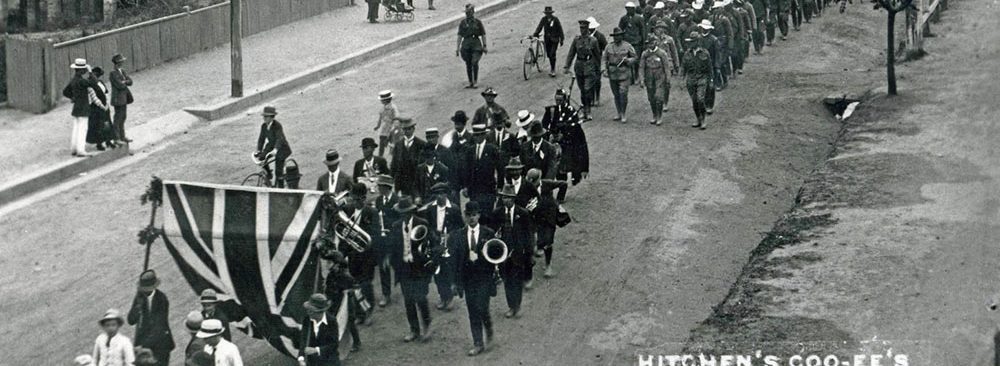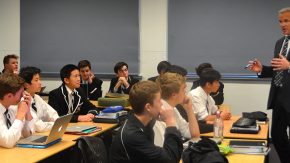The Coo-ee March
A remarkable phenomenon of late 1915 and early 1916 was the series of recruitment marches that started in various country towns and finished in major centres like Sydney and Brisbane, gathering recruits as they went. The first, and perhaps best known, was the Coo-ee March, which left Gilgandra on 10 October 1915 and reached Sydney, after 320 miles, on 12 November. Led by local plumber William (‘Captain Bill’) Hitchen, the march started with some 30 men and numbered 263 by the time it reached Sydney.
It was most likely on Parramatta Road, on the final stage from Ashfield to the Domain, that the students of Newington College joined the crowds watching the Coo-ee March pass. An account, written by ‘Alpha’ in the December 1915 issue of The Newingtonian, tells of ‘the Coo-ees, headed by a military band, … marching past the students of our school’. Observing the marchers, ‘Alpha’ and his schoolmates were impressed with ‘the characteristic bush style in which the dungarees were worn’ [on the route, they were issued with blue dungaree uniforms and white canvas hats] and ‘the fine physique of these men’. ‘Every one must have noticed the cheerful manner in which they swung along despite the heat, dust and length of the journey then almost completed.’
‘Alpha’ finished his report by ‘wishing the Coo-ees every success when their real task on the peninsula begins.’ In fact none of the marchers would reach Gallipoli. The day after they arrived in Sydney, Lord Kitchener, the British Commander-in-Chief, arrived at Gallipoli and quickly recommended its evacuation, which was completed by 20 December. The marchers and other recruits from this period would join the original Anzacs in Egypt and France.
To mark the Centenary of the Coo-ee March, a full re-enactment took place, leaving Gilgandra on 17 October 2015 and reaching Sydney, fittingly, on Remembrance Day, 11 November.
Image: Hitchen’s Coo-ee’s at Springwood (Blue Mountains Local Studies Collection)
Mr David Roberts
College Archivist






